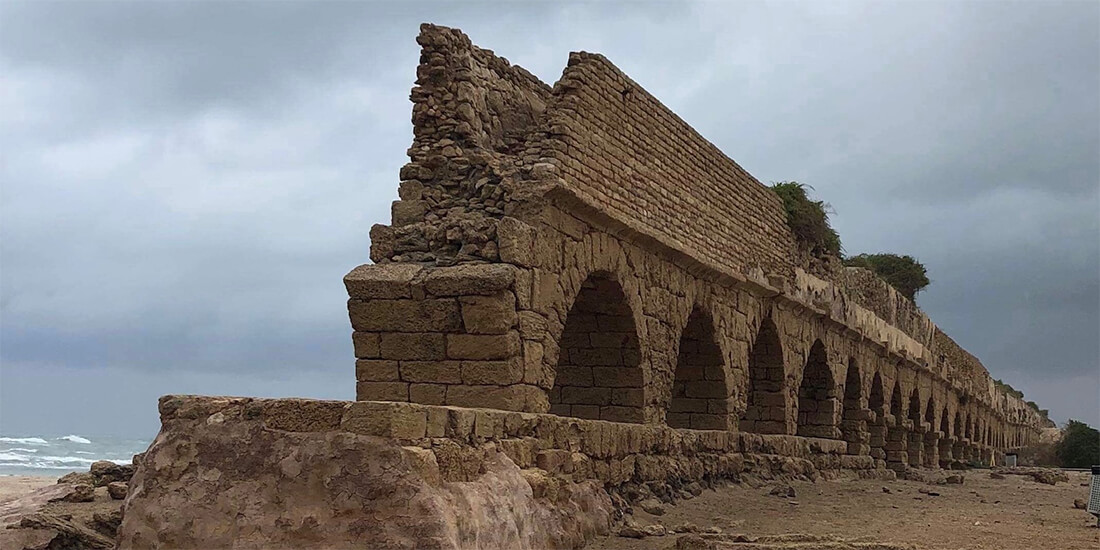
Herod, Client-King and Admirer of Rome
The builder king Herod, when looked at through the historical and cultural lens of the period, was first and foremost a client-king of Rome. Through client-kings that he propped up politically, the Roman Emperor was able to keep an eye on his borders and to control whole swaths of territory. First “loyal” to Marc Antony, Herod was reconfirmed as king by Augustus after Marc Antony’s defeat at the Battle of Actium. As an admirer of the Empire and the refined tastes of the Romans, but also constantly trying to legitimize himself in the eyes of his people (he was technically not from Judaea but from Idumea to the south), Herod threw himself completely into his massive building projects, which gave an unparalleled reputation to his kingdom and his people in the eyes of the Romans and the rest of the civilized world.
Herod, A Visionary Genius
Numbered among his many achievements are several true masterpieces, like the famous fortress at Masada (a humongous palace on a rocky peak in the middle of the desert) that even had running water… or whatever its equivalent was back then. Another masterpiece was his mausoleum, the Herodion, just a few kilometres south of Jerusalem, that he even built an artificial hill for, just so his palace/tomb would be higher than its surroundings. But perhaps one of his greatest achievements was the reconstruction and transformation of the Temple of Jerusalem. He was even able to gain permission from the great priest families in charge of the most sacred parts of the Temple to create a new sanctuary for the Ark of the Covenant and the Tablet of the Laws, a sanctuary that would in its magnificence outdo any and all of the Romans’ pagan temples.
If the Temple is a testament to the architectural prowess needed to build in the extremely hilly city of Jerusalem, then the construction of the great port of Caesarea shows just how advanced Herod and his builders were in engineering, with expertise that could rival even that of builders today.
The Port of Caesarea
Dotted along the shores of the Mediterranean are several ports that allowed trade throughout the whole Roman Empire and beyond. This is how spices and other precious resources from Asia made their way to Rome, mostly by way of Alexandria.
Herod wanted to give Israel a trading port that would rival even the port at Alexandria. However, a significant natural barrier was the geography of the Mediterranean coast within his kingdom. The area’s straight coast left the shorelines completely exposed to the currents and made the docking of ancient cargo difficult. Add to that the problems caused by the numerous earthquakes that hit the region. It would take more than that to make Herod give up though. He summoned engineers from Rome, imported materials that were said to withstand earthquakes (like those from Pozzuoli-Puteoli!) and devoted himself to the colossal task of building a port, and then a city to be admired by all.
This is how Caesarea, the port, and then the city were built, as an ode to Roman culture with its circus by the sea, its theatre, its baths and its crown jewel… the royal palace. And even though its lighthouse was smaller than the one in Alexandria, it still guided many a ship to its port, with its tall hangars capable of housing immense quantities of amphorae and products of all kinds on their way from Israel to Rome and the West.
Yours to discover with our Caesarea package…